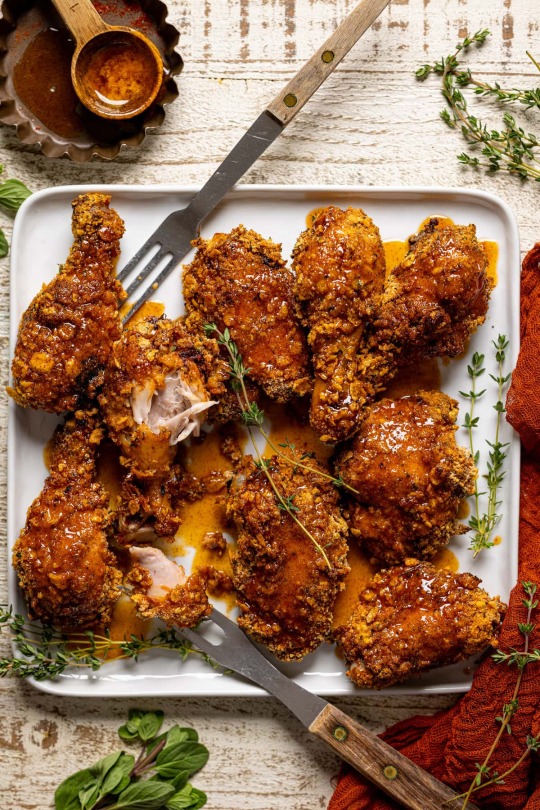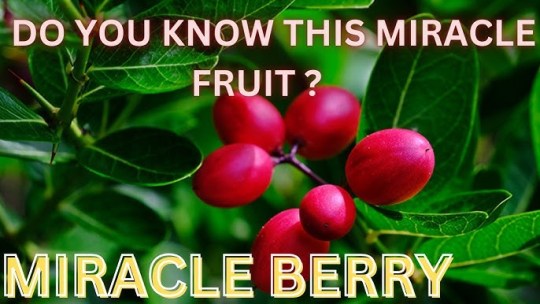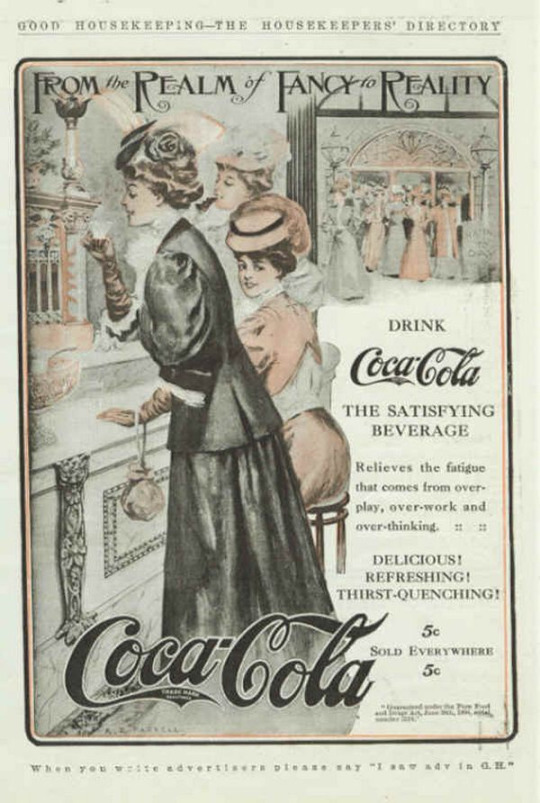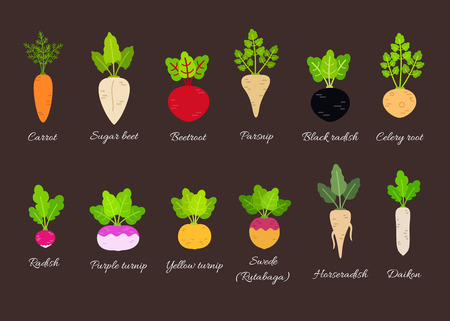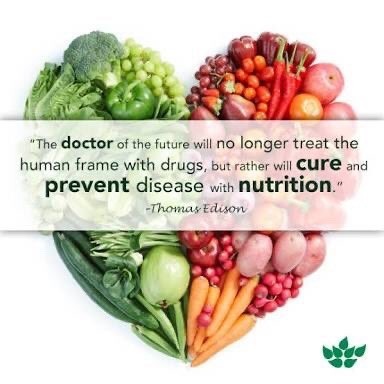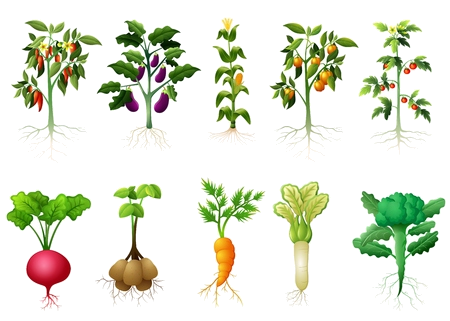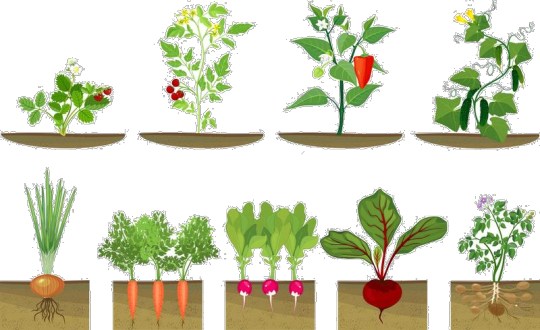Photo

Brown butter steak with roasted garlic whipped cauliflower
5K notes
·
View notes
Text



👇
https://youtu.be/HQPA5oNpfM4?si=HxY29-ObgXtNZOR3
youtube
The Columbian Exchange
by Alfred Crosby, Jr: https://bit.ly/3M3ZtbG
Chapters: Introduction: The Columbian Exchange 00:00
Diseases of the Columbian Exchange 1:14
John Green Does the Cinnamon Challenge (Ew) 4:21
An Open Letter to Tobacco 5:09
Animals of the Columbian Exchange 5:51
Plants of the Columbian Exchange 7:27
People of the Columbian Exchange 9:53
Credits 11:36

3 notes
·
View notes
Text

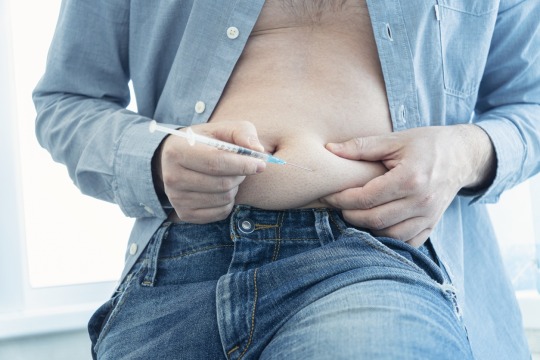

Scientists May Have Accidentally Invented a Do-It-All Longevity Drug
What can’t Ozempic do?
By Rebekah Harding August 10, 2023
Sometimes the best inventions—like potato chips and penicillin—are the product of a happy accident. This might be the case for semaglutide. New research suggests the wildly popular medication Ozempic might have health benefits that extend far beyond diabetes management and weight loss.
Semaglutide (frequently referenced by brand names Ozempic and Wegovy) belongs to a group of drugs called GLP-1 receptor antagonists. It works by mimicking the hormone GLP-, which helps regulate blood sugar in diabetes patients. The appetite and digestion-suppressing side effects have made Ozempic appealing to patients who want to curb cravings and lose weight.
Scientists are now exploring other off-label uses for the popular drug, like reducing heart disease risk and curbing addiction. And the results are promising.
Potential Benefits of Semaglutide
Reduce heart disease risk
New research presented at the 2023 European Congress on Obesity found that Wegovy may reduce the risk for heart disease, since obesity is a major risk factor for cardiac issues (1).
Patients who took a weekly Wegovy injection were surveyed by the Mayo Clinic using a standardized survey of heart risk (2). Most practitioners use the risk calculator developed by the American College of Cardiology, which uses factors like blood pressure and cholesterol to estimate a 10-year risk.
Wegovy users reported a 18 percent decline in 10-year heart disease risk. It’s worth noting that this study looked at patients in the real world so it lacked a control group of non-Wegovy users.
Novo Nordisk (the pharmaceutical company that makes Wegovy) recently announced the results of a double-blind clinical trial investigating the effects of Wegovy on 17,500 obese patients with no prior history of diabetes. The study found that Wegovy cut the risk of cardiovascular events—like stroke and heart attack—in obese patients by 20 percent.
Treat addiction
Semaglutide helps patients lose weight by curbing food cravings and reducing appetite. But the drug may be able to help people stave off cravings for other substances, like drugs and alcohol.
Several weight-loss patients told The Atlantic that after taking semaglutide injections, they “lost all interest” in other addictions like shopping, alcohol, and smoking. Some reported that their other self-soothing habits, like nail biting, completely disappeared as well.
While the science hasn’t quite caught up with these anecdotal claims, research has found other GLP-1 receptor antagonists successful in mitigating addiction in rodents. Cocaine-addicted lab rats sought out the drug less after being given four doses of a GLP-1 receptor antagonist in a 2018 study (3). Another found reported similar results on rats addicted to oxycodone that were given the same GLP-1 receptor antagonist (4).
GLP-1 receptor antagonists, like semaglutide, modify your brain’s reward center by regulating dopamine transporter activity (5), the same system involved in addiction.
This is enough to get scientists interested in semaglutide as an addiction treatment. Two ongoing clinical trials at the University of North Carolina, Chapel Hill intend to test if semaglutide could help treat nicotine and alcohol addictions.
Fight cancer
Semaglutide may boost immunity by improving the function of “natural killer” immune cells. Unlike other immune cells, natural killer cells don’t need prior exposure to an infected or invading cell—like cancer—in order to attack.
Being overweight can disrupt the normal function of natural killer cells, which may heighten cancer risk in obese individuals (6).
Scientists at Maynooth University followed 20 obese patients who took semaglutide once a week (7). After six months, participants’ natural killer cell function appeared to improve, independent of weight loss.
Prevent dementia
Age is the greatest risk factor for dementia and Alzheimer’s, but obesity and type 2 diabetes also skyrocket your chances of getting this debilitating disease (8).
Alzheimer’s is called “type three diabetes” in some research circles. This is because APOE4—the gene thought to be partially responsible for Alzheimer’s—may make it harder for your brain to use insulin. This causes your brain cells to essentially “starve and die,” according to the Mayo Clinic.
Type 2 diabetes patients using semaglutide were found to have a lower instance of dementia, according to a 2022 study (9). Vascular dementia—a form that is caused by limited blood supply to the brain—is most commonly associated with type 2 diabetes patients (10). This means that semaglutide may be better at protecting against certain forms of the disease.
Novo Nordisk is funding multiple clinical trials to investigate the effects of semaglutide on dementia risk, with results expected in 2026.
https://honehealth.com/edge/health/ozempic-heart-disease-dementia-addiction-cancer/


0 notes
Text
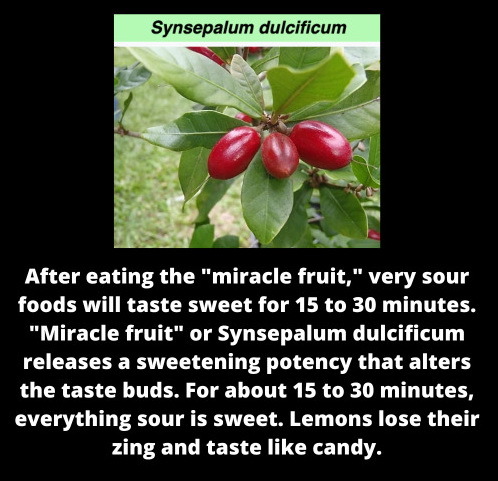




Miracle Fruit Synsepalum dulcificum
miracle fruit, (Synsepalum dulcificum), evergreen shrub of the family Sapotaceae, grown for its mild fruits that make subsequently eaten sour foods taste sweet. The miracle fruit plant is native to tropical West Africa, where it is used locally to sweeten palm wine and other beverages. The unrelated sweet prayer plant (Thaumatococcus daniellii) is also known as miracle fruit for its similar ability to make sour foods taste sweet.
Mechanism of action and uses
The flavor-altering mechanism of miracle fruit is due to a glycoprotein named miraculin, which was first isolated by Japanese researcher Kenzo Kurihara in 1968. Although miraculin itself is not sweet, it binds to receptors on the taste buds and causes acidic foods to be perceived as sweet. The effect typically lasts from a half hour to two hours, with the intensity declining over time.
The fruit has been proposed as a treatment for the taste changes experienced by some chemotherapy patients, though further studies are needed. In the United States an attempt was made in the 1970s to commercialize the fruit extract as a low-calorie or noncaloric sweetener for use by diabetics and dieters, but the U.S. Food and Drug Administration (FDA) classified the product as a food additive requiring further safety testing, and the venture was abandoned. Similarly, the European Union required a safety assessment before miracle fruit extracts could be used as a food additive, though miraculin has been approved in Japan. The purchase of powdered or whole fruits is legal in most places, and the fruit is commonly consumed as a novelty.
Synsepalum dulcificum is a plant in the Sapotaceae family, native to tropical Africa. It is known for its berry that, when eaten, causes sour foods (such as lemons and limes) subsequently consumed to taste sweet. This effect is due to miraculin. Common names for this species and its berry include miracle fruit, miracle berry, miraculous berry, sweet berry, and in West Africa, where the species originates, agbayun (in Yoruba), taami, asaa, and ledidi.
The berry itself has a low sugar content and a mildly sweet tang. It contains a glycoprotein molecule, with some trailing carbohydrate chains, called miraculin. When the fleshy part of the fruit is eaten, this molecule binds to the tongue's taste buds, causing sour foods to taste sweet. At neutral pH, miraculin binds and blocks the receptors, but at low pH (resulting from ingestion of sour foods) miraculin binds proteins and becomes able to activate the sweet receptors, resulting in the perception of sweet taste. This effect lasts until the protein is washed away by saliva (up to about 30 minutes).
The names miracle fruit and miracle berry are shared by Gymnema sylvestre and Thaumatococcus daniellii, which are two other species used to alter the perceived sweetness of foods.
Miracle Fruit - Uses, Side Effects, and More
Side Effects
When taken by mouth: There isn't enough reliable information to know if miracle fruit is safe or what the side effects might be. Miracle fruit might cause an allergic reaction in some people.
When applied to the skin: There isn't enough reliable information to know if miracle fruit is safe or what the side effects might be. Miracle fruit might cause an allergic reaction in some people.
Special Precautions and Warnings
When taken by mouth: There isn't enough reliable information to know if miracle fruit is safe or what the side effects might be. Miracle fruit might cause an allergic reaction in some people.
When applied to the skin: There isn't enough reliable information to know if miracle fruit is safe or what the side effects might be. Miracle fruit might cause an allergic reaction in some people.
Pregnancy and breast-feeding: There isn't enough reliable information to know if miracle fruit is safe to use when pregnant or breast-feeding. Stay on the safe side and avoid use.
Allergies: People with allergies to other substances, such as peanut, latex, peach, and soy, might also be allergic to miracle fruit.
Diabetes: Miracle fruit might lower your blood sugar. As a result, your diabetes medications might need to be adjusted by your healthcare provider.
Moderate Interaction
Be cautious with this combination
Medications for diabetes (Antidiabetes drugs) interacts with MIRACLE FRUIT
Miracle fruit might lower blood sugar. Diabetes medications are also used to lower blood sugar. Taking miracle fruit along with diabetes medications might cause your blood sugar to go too low. Monitor your blood sugar closely. The dose of your diabetes medication might need to be changed.
Some medications used for diabetes include glimepiride (Amaryl), glyburide (DiaBeta, Glynase PresTab, Micronase), insulin, metformin (Glucophage), pioglitazone (Actos), rosiglitazone (Avandia), and others.
Dosing
The appropriate dose of miracle fruit depends on several factors such as the user's age, health, and several other conditions. At this time there is not enough scientific information to determine an appropriate range of doses for miracle fruit. Keep in mind that natural products are not always necessarily safe and dosages can be important. Be sure to follow relevant directions on product labels and consult your pharmacist or physician or other healthcare professional before using.
1 note
·
View note
Text



How to Grow Chamomile in Containers
May 22, 2020 by Kristine Lofgren
Chamomile is a marvelous medicinal herb with beautiful blooms. But let’s be honest: it can be a bit boisterous in the garden.It’s one of those plants that you start growing, only to find a few years later that it has reseeded, and volunteers have started popping up all over the place.Or maybe you don’t have the space to dedicate to an in-ground plot for your favorite herbs, but you long for the fresh taste of homegrown chamomile tea.The solution? Containers.
Planting chamomile in a pot keeps things under control. You can still enjoy those pretty little white flowers, even if you only have a tiny spot in the corner of your apartment balcony.
There are two types of chamomile: Roman, Chamaemelum nobile, and German, Matricaria recutita.
Both are suitable for container growing, but German chamomile can get large, so you’ll need a heftier pot to grow this one. I’ll provide more differences between the two species below.
Here’s what we’ll cover:
What You’ll Learn
Why Grow Chamomile in a Container?
Choosing the Best Container
Picking the Right Site
Preparing the Pot
How to Grow
Container Care and Harvest
Why Grow Chamomile in a Container?
In general, growing any herb in a container can make it easier to use.
When it’s located close to your kitchen, as part of your patio or deck decor, it’s that much easier to bring in a harvest when you need it.
https://gardenerspath.com/plants/flowers/grow-chamomile-containers/
0 notes
Text
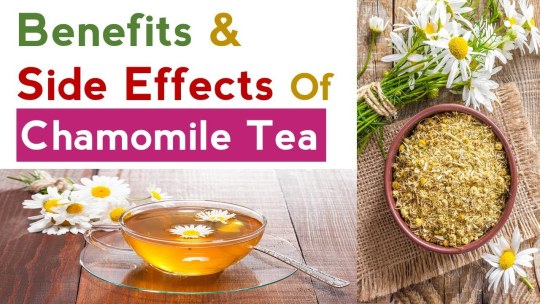


Benefits and Side Effects Of Chamomile Tea
Chamomile contains a mixture of essential oils, vitamins and minerals that are known to provide an array of benefits.
youtube
0 notes
Text


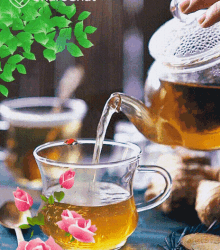
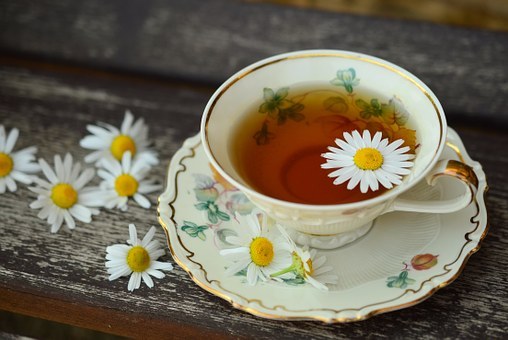
How to Prepare and Brew Chamomile Tea
Lee Tea Dec 11, 2019
Investigative journalist digging into the science and marketing of folk remedies, struggling with opposition to whistleblowers since 2015.
Steeping Instructions for Pre-Bagged or Loose Leaf Chamomile Tea
The blossoms of the chamomile plant (Matricaria recutita) have been used by ancient Egyptians for over 3,000 years for their pleasantly calming, comforting, and anti-inflammatory properties. Chamomile has a sweet, mild taste with hints of apple and is caffeine free. With the wide variety of exotic tea blends on supermarket shelves today, let's get back to basics on how to easily prepare a cup of chamomile tea.
What You'll Need
kettle, stainless steel or ceramic (what you'll boil your water in)
teapot or mug with a lid (what you'll steep your tea in, which is not your kettle)
1 teaspoon of dried chamomile flowers (about 1 gram)
Infusion device (like a tea ball, heat seal tea bag, piece of cheesecloth and string, or steep loose and use a strainer after steeping)
8 ounces of filtered water and hot water from the tap
Instructions
Fill the teapot or mug you'll be steeping in with hot tap water to warm the container.
Fill your infusion device with the chamomile. If steeping without a device (called "loose leaf"), wait until Step 4 to add your chamomile.
Heat 6–8 ounces of filtered water in your kettle on your stove to first boil (when the water just begins to form small bubbles). Remove from heat.
Empty your teapot or mug of the tap water and add the chamomile to this container. Pour water from the kettle over the chamomile and cover. This helps to fully release the oils and matricin from the flower, enhancing the taste and medicinal components of your cup of tea.
Steep (let sit) for about 5 minutes. In the future, you can adjust the amount of chamomile you use and steep time to taste, but steeping too long may result in a more bitter flavor.
Uncover and remove your infusion device from your tea pot or mug. If you steeped loose leaf, pour the steeped tea through a strainer into a second mug.
Your chamomile tea is ready to enjoy. You may add milk, honey, or sweetener to taste, though doing so may alter the natural taste and medicinal benefits of your chamomile tea. I prefer this tea with nothing added.
https://delishably.com/beverages/How-to-Prepare-Chamomile-Tea
1 note
·
View note
Text

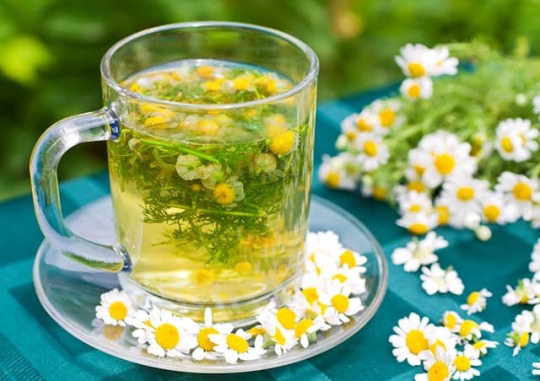
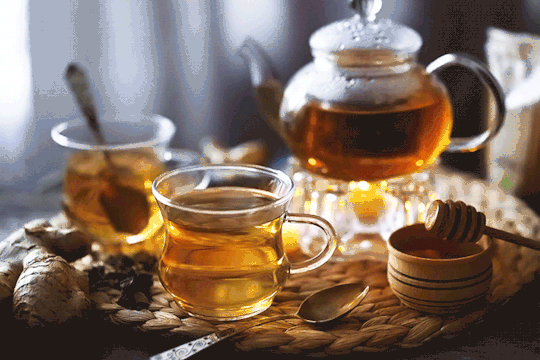
How to Make Chamomile Tea
| With Chamomile Flowers and Fresh Sage
youtube
4 notes
·
View notes
Photo



Medicinal Soft Drinks and Coca-Cola Fiends: The Toxic History of Soda Pop
Soda’s reputation has fallen a bit flat lately: The all-American beverage most recently made headlines due to an FDA investigation of a potential carcinogen, commonly called “caramel coloring,” used in many soft-drink recipes. This bit of drama follows other recent stories that paint an unflattering picture of the soda industry, including New York’s attempt to ban super-sized drinks, the eviction of soda machines from many public schools, and a spate of new soda-tax proposals. All these regulations are designed to mitigate the unhealthy impacts of Big Soda, such as increasing childhood obesity, in the same way restrictions were slapped on cigarettes in years past.
“The drink became symbolic of America, and even freedom in a way. It made Coca-Cola more than just another fizzy drink.”
Faced with all this bad press, it’s hard to believe that the “evil” soft drink actually began as a health product, touted for its many beneficial effects. In fact, soda got its start in Europe, where the healing powers of natural mineral waters have been prescribed for hundreds of years. Bathing or drinking the water from these natural spas was thought to cure a wide variety of illnesses. Tristan Donovan, the author of Fizz: How Soda Shook Up the World, says that the ailments treated with bubbling spring waters constituted a “ludicrously big list,” everything from gallstones to scurvy. (In reality, the beverage did little more than settle an upset stomach, without any adverse side effects.)
Despite the broad appeal of mineral water, packaging and transporting this effervescent liquid proved difficult, so chemists set out to make their own. “It took until 1767 for the real breakthrough to happen when Joseph Priestley, the British chemist who was the first to identify oxygen, figured out a way to put carbon dioxide into water,” says Donovan. Priestley’s process used a fermenting yeast mash to infuse water with the gas, resulting in a weakly carbonated drink. Proponents of the bubbly beverage’s healthful properties were thrilled.
Top: A Coke advertisement from 1907. Above: Early soda machines required oversized cranks to manually carbonate water, like these devices from the 1870s.
In 1783, the Swiss scientist Johann Jacob Schweppe improved on Priestley’s process with a device for carbonating water using a hand-cranked compression pump, launching the now-famous Schweppes company. Yet it was still virtually impossible to get carbonated water to market without losing its fizz, as drinks in corked stoneware bottles tended to go flat quickly and glass bottles weren’t widely available. Charles Plinth solved part of the problem with his soda syphon in 1813, which could dispense bubbly water without compromising the remaining mixture’s carbonation, though syphons still had to be refilled at a facility that actually produced the carbonated liquid.
Finally, in 1832, the English-born American inventor John Matthews developed a lead-lined chamber wherein sulphuric acid and powdered marble (also known as calcium carbonate) were mixed together to generate carbon dioxide. The gas was then purified and manually mixed into cool water with steady agitation, creating carbonated water. Matthews’ design worked either as a bottling unit or a soda fountain, since it produced enough carbonated water to last customers all day. But America’s weak glass industry still wasn’t able to support large-scale bottling plants, so the simplest way to sell soda water was at public fountains.
Left, a Schweppes ad from 1937, more than 150 years after the mineral water company was founded. Right, early carbonated waters were sometimes sold in rounded “torpedo” bottles, forcing them to lie flat so the liquid contents would dampen the cork, preventing it from shrinking.
“If I were going to single out one person as creating the carbonated drink industry, I would give credit to Benjamin Silliman, even though he eventually failed financially,” says Anne Funderburg, the author of Sundae Best: A History of Soda Fountains.
An illustration of a French soda water apparatus, featuring soda syphons and carbonating machines below the counter, circa 1830s.
“Silliman was a chemistry professor at Yale College, and he wanted to supplement his small paycheck while also doing something altruistic for mankind. Silliman believed that carbonated waters could be used as medicine, so he set up a business in New Haven, Connecticut, selling bottled carbonated water.” Though Silliman had little success selling the drink at his local apothecary, he decided to expand his business, designing a larger-capacity carbonation apparatus and securing investments to open two pump rooms in New York City.
In 1809, Silliman started selling his soda water at the Tontine coffeehouse and the City Hotel, elegant establishments that catered to an elite clientele (the Tontine was in the same building as the New York Stock Exchange). In addition to their supposedly beneficial products, these early soda fountains were designed to create an uplifting environment, adorned with marble counters and ornate brass soda dispensers. However, Silliman continued to focus on the medical benefits of his soda water, while his competitors recognized that the social aspects of drinking were potentially more appealing.
In their heyday, soda fountains were elaborately designed places for rejuvenation. Left, the counter at the Clarkson & Mitchell Drugstore in Springfield, Illinois, circa 1905. Via the Abraham Lincoln Presidential Library and Museum. Right, an 1894 ad for an ornate fountain produced by Charles Lippincott & Co.
“People who had better business sense than Silliman set up their pump rooms like a spa: You came to drink your carbonated water, but you hung around reading the free books and conversing with other intelligent people who were also there to drink carbonated water,” says Funderburg. “They understood that you could make a real business out of it, where Silliman treated soda more as a medicine.” Though the servers at Tontine recognized that customers preferred soda water as a mixer, it remained a slow seller, and eventually Silliman was forced out of the industry. Even as Silliman’s company failed, the soda trend was catching, and successful fountains soon popped up in other cities like Philadelphia and Baltimore.
Because carbonated water was still viewed as a health drink, the first soda shops were situated in drugstores and closely linked with their pharmacies. “Part of the reason they became so entwined is that the process of carbonating water and making syrups or flavorings was something pharmacists already had the skill set to do,” Donovan explains. “They were the obvious people to take this on, and they started adding in ingredients they thought were health-providing. Sarsaparilla was linked to curing syphilis. Phosphoric acid was seen as something that could help hypertension and other problems.” Long-standing favorites like ginger ale and root beer were also initially prized for their medicinal qualities.
According to Darcy O’Neil, author of Fix the Pumps, pharmacists initially used sweet-tasting soda flavors to mask the taste of bitter medicines like quinine and iron, as most medication was taken in liquid form during this era. Plus, many pharmaceutical tinctures and tonics were already mixed with alcohol, which made even the most pungent medicinal flavors enticing. “Many of the elixirs and tonics contained as much alcohol as a shot of whiskey,” writes O’Neil. “This was popular with both the imbiber and pharmacy. The imbiber could get an alcoholic drink at a fraction of the bar’s price because there were no taxes on alcohol-based ‘medicine.’”
Acid phosphates like Horsford’s, seen in these advertisements from the 1870s, gave many soda fountain drinks a distinctively tart flavor.
Besides booze, sodas of the 19th century also incorporated drugs with much stronger side effects, including ingredients now known as narcotics. Prior to the Pure Food & Drug Act of 1906, there were few legal restrictions on what could be put into soda-fountain beverages. Many customers came to soda fountains early in the morning to get a refreshing and “healthy” beverage to start their day off right: Terms like “bracer” and “pick-me-up” referred to the physical and mental stimulation sodas could provide, whether from caffeine or other addictive substances.
Pharmacists were soon making soda mixtures with stronger drugs known as “nervines,” a category that included strychnine, cannabis, morphine, opium, heroin, and a new miracle compound called cocaine, which was first isolated in 1855. “Cocaine was a wonder drug at the time when it was first discovered,” Donovan explains. “It was seen as this marvelous medicine that could do you no harm. Ingredients like cocaine or kola nuts or phosphoric acid were all viewed as something that really gave you an edge.
“Cocaine was a wonder drug at the time when it was first discovered. It was seen as this marvelous medicine that could do you no harm.”
“Recipes I’ve seen suggest it was about 0.01 grams of cocaine used in fountain sodas. That’s about a tenth of a line of coke,” he says. “It’s hard to be sure, but I don’t think it would’ve given people a massive high. It would definitely be enough to have some kind of effect, probably stronger than coffee.” While the dosages were small, they were certainly habit-forming, and soda fountains stood to profit from such consistent customers.
Throughout the mid-19th century, soda fountains spread clear across the U.S., and a niche health drink became a beloved American refreshment, capable of competing with the best cocktails in the world. Soda throwers or soda jerks, as they were later called (after the jerking arm movement required to operate the taps), had to be just as skilled as bartenders at mixing drinks; in fact, many bartenders started working at soda fountains once the industry was booming.
“Around that time, it became obvious to the medical profession that there weren’t any health benefits to carbonated water on its own, so people started selling it as a treat,” says Funderburg. “It’s hard to put our heads around how much of a treat cold fizzy water was back then. People didn’t have mechanical refrigeration, so to have a cold drink was a big deal. They flavored them with chocolate or fruit syrups, and citrus fruits like lime and lemon became favorites.”
By the early 20th century, soda fountains were an integral part of neighborhood drugstores, such as this counter in the People’s Drug Store, in Washington, D.C. pharmacy, circa 1920. Via Shorpy.
Presumably, as soon as carbonated water was commercially available, people were adding their own flavorings to spice things up. “The earliest advertisement I’ve managed to find for something we would call soda was from 1807, and that was a sparkling lemonade being sold in York,” says Donovan. “It could have been a fairly new idea, but people had flavored still water for years beforehand.”
Lemon drinks made up the first of many flavor fads to hit the soda industry, likely because un-carbonated lemonade was a familiar refreshment. According to O’Neil, lemon syrups were already used as a base flavor for many medicines, so concocting a tasty drink with these was natural. Beyond lemon, all manner of citrus-flavored sodas were enjoyed in the mid-1800s, in part because their essential oils were easy to extract and preserve. Other fountain staples included orange, vanilla, cherry, and wintergreen, although shops were always testing new recipes looking for the latest hip drink. Most soda mixtures were made using a sugary simple syrup, but popular flavors were often far more tart than today’s sodas.
One of the most complete records of these innovative cocktails is DeForest Saxe’s 1894 book entitled Saxe’s New Guide, or, Hints to Soda Water Dispensers. In its pages, Saxe illuminates his own experience working a soda fountain, detailing tips for pouring sodas, keeping them cold, and making an extensive list of drink recipes. From a “Tulip Peach” to a “Swizzle Fizz,” or an “Opera Bouquet” to an “Almond Sponge,” Saxe covered the wildest new flavor sensations in addition to the classic egg creams and flavored phosphates. But despite their fantastic names, Saxe’s recipes notably avoid the medicinal ingredients many soda fountains relied upon to give their drinks a kick.
An illustration of proper mixing form as published in Saxe’s 1894 book.
By the turn of the 20th century, many Americans had begun to recognize the dangers of serving unregulated medications in such a casual manner. In 1902, the Los Angeles Times published an article titled “They Thirst for Cocaine: Soda Fountain Fiends Multiplying,” which focused on the questionable ingredients in popular drinks like Coca-Cola. However, Donovan says that judging from the small quantities of cocaine in actual recipes, it’s doubtful that there were many soda-addicted fiends.
In the 1890s, Coke was directly marketed as a medicinal drink.
In fact, Coke was developed while looking for an antidote to the common morphine addictions that followed the Civil War: Veteran and pharmacist John Stith Pemberton concocted the original Coca-Cola mixture while experimenting with opiate-free painkillers to soothe his own war wounds. The company’s first advertisement ran on the patent-medicine page of the Atlanta Journal in 1886, and made it clear that Coca-Cola was viewed as a health drink, “containing the properties of the wonderful Coca plant and the famous Cola nuts.”
Of course, these were also the properties of your basic uppers: Cocaine is a coca leaf extract, and the African kola nut is known for its high caffeine content. Once the Pure Food and Drug Act of 1906 required narcotics to be clearly labelled, the majority of Coca-Cola’s cocaine was removed, though it took until 1929 for the company to develop a method that could eliminate all traces of the drug.
However, at the turn of the 20th century, the harshest public criticism was reserved for a different devilish drink — alcohol. As temperance groups rallied against booze, they helped propel teetotaling customers into American soda fountains. In 1919, the year before Prohibition took effect, there were already 126,000 soda fountains in the United States, far exceeding the number of bars and nightclubs today. “Soda had always played up the temperance link,” says Donovan. “Even before Prohibition, sodas like Hires Root Beer were presented as non-alcoholic drinks and marketed that way. Lots of fizzy-drink companies encouraged the temperance movement, and they were generally quite pleased from a business perspective when Prohibition came in. Their sales rose. People couldn’t go to bars anymore so they turned to soda fountains instead.”
https://medium.com/hunter-oatman-stanford/medicinal-soft-drinks-and-coca-cola-fiends-the-toxic-history-of-soda-pop-9f8c8965cfcd
0 notes
Text



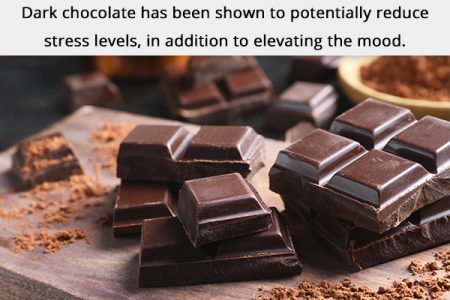
9 Best Foods That Help Fight Depression
By Kathryn Strickland, RD | Registered Dietitian January 3, 2023
Depression is a mental health disorder that is characterized by persistent spells of low mood, sadness, and disinterest that negatively impacts your personal, professional, and social life. This poor quality of life can even reduce your lifespan by causing premature mortality.
Depression stems from a combination of factors that can be biological, social, or psychological in nature and can cause mental distress in different ways. (2)
Some of these factors such as your lifestyle choices are controllable, whereas others such as genetics are beyond your control. The controllable factors can be managed to improve overall mental health and reduce the risk of depression, and a lot of research is being conducted on this topic in recent times. (3)
There is no cure for depression, but it can be managed through medication and mental health counseling combined with the recommended lifestyle changes. Your diet can also play a role in fighting depression and improving your overall mental well-being.
Foods to Fight Depression
Here is a list of foods that have shown to positively impact brain health and mood and, therefore, may prove helpful in managing depression.
Green tea
frequent green tea intake can benefit those with depression
Frequent green tea intake may benefit those with depression if consuming more than 3 cups a day. This may be possibly due to its high content of polyphenols, which is a micronutrient that can lower stress levels in the body, and/or due to theanine, an amino acid that can help protect the brain and make it function properly. (5)
Green tea may also help fight depression due to other factors such as being in a social environment, having a healthier lifestyle, or reducing stress while preparing and consuming the tea. The research is still unclear what aspect of drinking green tea fights depression.
Salmon
eating salmon can help with depressive symptoms
Salmon is high in omega-3 fatty acids, which can help with depression symptoms by increasing positive mood.
Correlation studies have seen a decrease in mental disorders when there is an increase in fish consumption. (6) This may be due to the high content of DHA in salmon or another factor.
Research is still looking into the best way to help increase a positive mood with DHA or supplementation.
Dark chocolate
eating dark chocolate can help elevate your mood
Many people like eating dark chocolate, and the good news is it has been shown to potentially reduce stress levels, just not elevate the mood. (7) So, enjoy eating dark chocolate to reduce stress – just don’t expect it to fight depression.
Eggs
egg consumption can help in your fight against depression
Can an egg a day keep depression away? That is debatable according to research.
One study showed that eggs helped to fight depression possibly due to the B vitamin content of eggs, while another showed that eggs had no effect on depression possibly due to their cholesterol content. (8)
It is unlikely that one food item could aid against depression. However, it is possible that eggs along with other dietary choices such as consuming more fruits, vegetables, and whole grains may help relieve depression. (9)
Bananas
bananas can help people with depression feel better
Bananas are high in fiber and potassium, and research has shown that people who eat bananas feel better. (10) This correlates with another study that showed individuals perceived a decrease in depression symptoms after eating a banana.
Whether or not bananas can alleviate depression symptoms, it seems clear that people feel better or even happier after eating bananas. (11)
Avocado
avocados can help fight against depressive symptoms
Avocados have the potential to fight against depression due to their magnesium content. (12)
Blueberries
blueberries can help elevate your mood
Blueberries are full of antioxidants and can elevate the mood. (13) It’s unclear if this small superfood can help fight depression, but an elevated mood is much better than a negative one.
Spinach
Spinach is a leafy green that should be eaten by the majority of the population. It is high in iron and calcium, (14) and it has the potential to boost your energy levels by preventing iron deficiency.
At this point, the research is unclear if spinach can fight depression, but again it can improve mood.
Asparagus
eat asparagus to help prevent depression and boost your mood
Asparagus is another vegetable that when eaten can improve and elevate your mood. (15) This effect is likely due to its high folate and tryptophan content. Tryptophan gets converted to serotonin, a neurotransmitter that is known to elevate mood. (16)
Again, there needs to be more research to determine if asparagus can fight against depression. However, given its high content of folate, tryptophan, and fiber, asparagus is a good vegetable to eat regularly.
What other lifestyle changes should be made to fight depression?

Adopting a Mediterranean diet, which consists of fruits, vegetables, whole grains, and fish, promotes anti-inflammatory effects in the body. This is important as a pro-inflammatory diet high in refined carbs, sugar, and saturated fat can lead to more depressive symptoms.
Exercise should also be included in the fight against depression. Research has shown only a modest effect of exercise on elevating a person’s depressive symptoms. However, exercise can also increase heart rate and increase blood flow throughout the body. (20)
Final Word
The foods you eat affect your brain health, so you have to be mindful of your dietary choices. Eating right can help reduce the risk and severity of depressive episodes, but it is only a small part of the treatment approach.
Depression is multifactorial and should be treated as such, which means that you should examine your eating habits, physical activity, stress levels, social life, professional life, and need for professional help including medication if needed. (21)
Be aware of the barriers to change as depression can make people less motivated to change lifestyle habits or seek professional help.
0 notes
Text
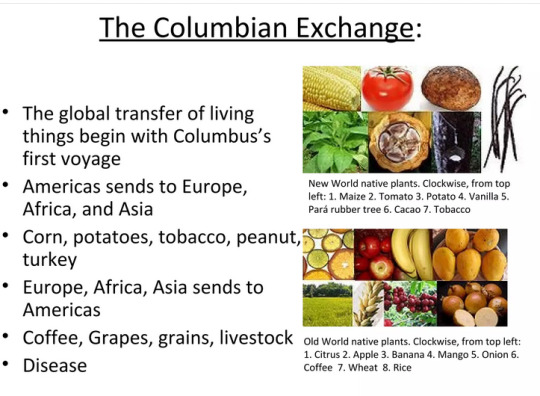


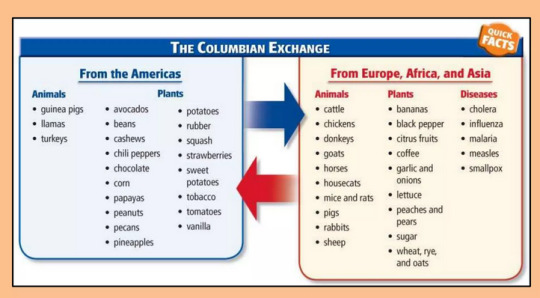
Columbian Exchange:
The Columbian exchange, also known as the Columbian interchange, was the widespread transfer of plants, animals, precious metals, commodities, culture, human populations, technology, diseases, and ideas between the New World (the Americas) in the Western Hemisphere, and the Old World (Afro-Eurasia) in the Eastern Hemisphere, in the late 15th and following centuries. It is named after the Italian explorer Christopher Columbus and is related to the European colonization and global trade following his 1492 voyage. Some of the exchanges were purposeful; some were accidental or unintended. Communicable diseases of Old World origin resulted in an 80 to 95 percent reduction in the number of Indigenous peoples of the Americas from the 15th century onwards, most severely in the Caribbean. The cultures of both hemispheres were significantly impacted by the migration of people (both free and enslaved) from the Old World to the New. European colonists and African slaves replaced Indigenous populations across the Americas, to varying degrees. The number of Africans taken to the New World was far greater than the number of Europeans moving to the New World in the first three centuries after Columbus.
0 notes
Text



APUSH Topic 1.4: The Columbian Exchange
The Columbian Exchange is one of the most featured topics in the AP® space, with relevance to all the AP® history courses (United States, European, and World History), as well as AP® Human Geography. Although each course examines the Columbian Exchange from a different angle, the major features of this expansion of global trade have the same relevance to all subjects, so although this Columbian Exchange Study Guide from Marco Learning is targeted toward AP® U.S. History students, it could prove useful beyond that course. 👇
WHY WE HAVE FRENCH FRIES
The Columbian Exchange was a massive exchange of crops, animals, people, diseases, goods, and ideas between the Old World (Africa, Asia, and Europe) and the New World (the Americas), which greatly altered people’s lives on both sides of the Atlantic Ocean. The explosion of global trade then occurred as a result transformed goods that had either been unknown (or known as rare luxuries) into everyday items available even to people of all social classes.
The arrival of new crops on both sides of the Atlantic resulted in more varied diets and new patterns of consumption. Before the Columbian Exchange, there were no French fries, and the idea of a marinara sauce was foreign to Italy, as both the tomato and the potato were still confined to the New World, hidden from European kitchens. At the same time, there were crops, such as sugar and coffee, that were known in the Old World, but very rare and expensive. Once these crops found fertile soil in the New World, they became widely available. The increased demand for coffee and sugar-fueled the rise in the African Slave Trade, which resulted in the involuntary movement of millions of Africans to the New World. The non-edible tobacco plant also made a profound impact, as Europeans embraced the habit of smoking the novel substance, as Native Americans had been doing for hundreds of years
***************************************
How potatoes took over the world:
The Columbian Exchange
Modern World History 10 of 30| Study Hall
The dawn of international trade didn’t just start the transport of goods and people between continents. It also brought on significant unintended consequences, both positive and negative. In this episode Study Hall World History, we track the effects of disease and the arrival of different animals and plants through the Columbian Exchange.
youtube
4 notes
·
View notes
